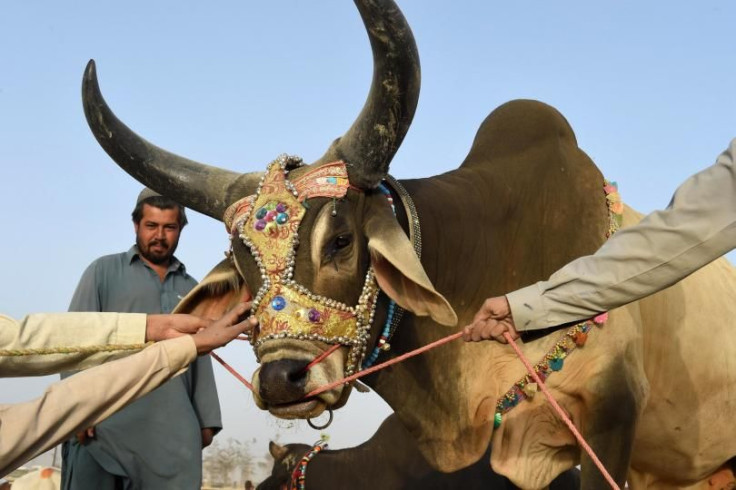When Is Eid Al Adha 2017? Facts About Muslim Feast Of Sacrifice

Eid al Adha, also known as the Feast of Sacrifice, represents the end of Hajj, an annual Islamic pilgrimage to Mecca in Saudi Arabia. The day is one of the holiest celebrations on the Islamic calendar, and is a public holiday in many Muslim countries.
What is Eid Al Adha?
Millions of Muslims across the globe celebrate the day as a reminder of the time when Prophet Ibrahim was about to sacrifice his son Ismail (aka Ishmael) at God’s command. But when Ibrahim was on the verge of sacrificing Ismail, God spared his life, replacing him with an animal. This day symbolizes Ibrahim’s devotion to "Allah" (God).
Eid al Adha marks the end of Hajj, the journey which must be done by devout Muslims at least once in their lifetimes as one of the five pillars of Islam.
When will Eid Al Adha start?
The starting date for Eid al Adha is dependent upon the sighting of the new moon. It is determined based on the lunar cycle, which means the festival falls on a different date every year. In 2017, it is to start Sept. 1 and end Sept. 2. The date was confirmed after moon sighting on Aug. 22.
Muslim communities in Europe, the U.S. and Canada follow Saudi Arabia's announcement of the date, which is then relayed by the European Council for Fatwa and Research, the Islamic Society of North America (ISNA), and the Fiqh Council of North America.
How is Eid al Adha celebrated?
During Eid al Adha, Muslims with the financial means sacrifice an animal such as a sheep, goat or cow. The day is started with a morning prayer, followed by exchange of gifts and food among family and friends. Muslims also mark the day by sharing the meat of a slaughtered animal among relatives and closed ones.
According to the rituals, the meat of the sacrificed animal must be divided in three portions, one to be distributed among the poor, one for relatives and one for self-consumption
Difference between Eid al Adha and Eid al-Fitr
While Eid al Adha marks the end of Hajj, Eid al-Fitr marks the end of Ramadan, the Muslim month of fasting. Usually Eid al Adha falls roughly two months after Eid al-Fitr. Ramadan is considered very sacred by Muslims as they believe it was during this month Allah revealed the first verses of the Koran to Prophet Muhammad.
Other names for Eid al Adha
- In the Philippines it is spelled as Eidul Adha.
- Eid el-Kabir is the commonly referred term for the celebration in Nigeria and Morocco.
- It is referred to as Tabaski in Senegal and Gambia.
- Kurban Bayrami in Turkey.
- Hari Raya Haji is another name for the festival in Indonesia, Malaysia and Singapore.
- It is celebrated by the name Eid è Qurbon in Iran.
- Bakr-Id or Qurbani Eid, as referred to in the Urdu language, is another name for the day in India and Bangladesh.
© Copyright IBTimes 2025. All rights reserved.





















